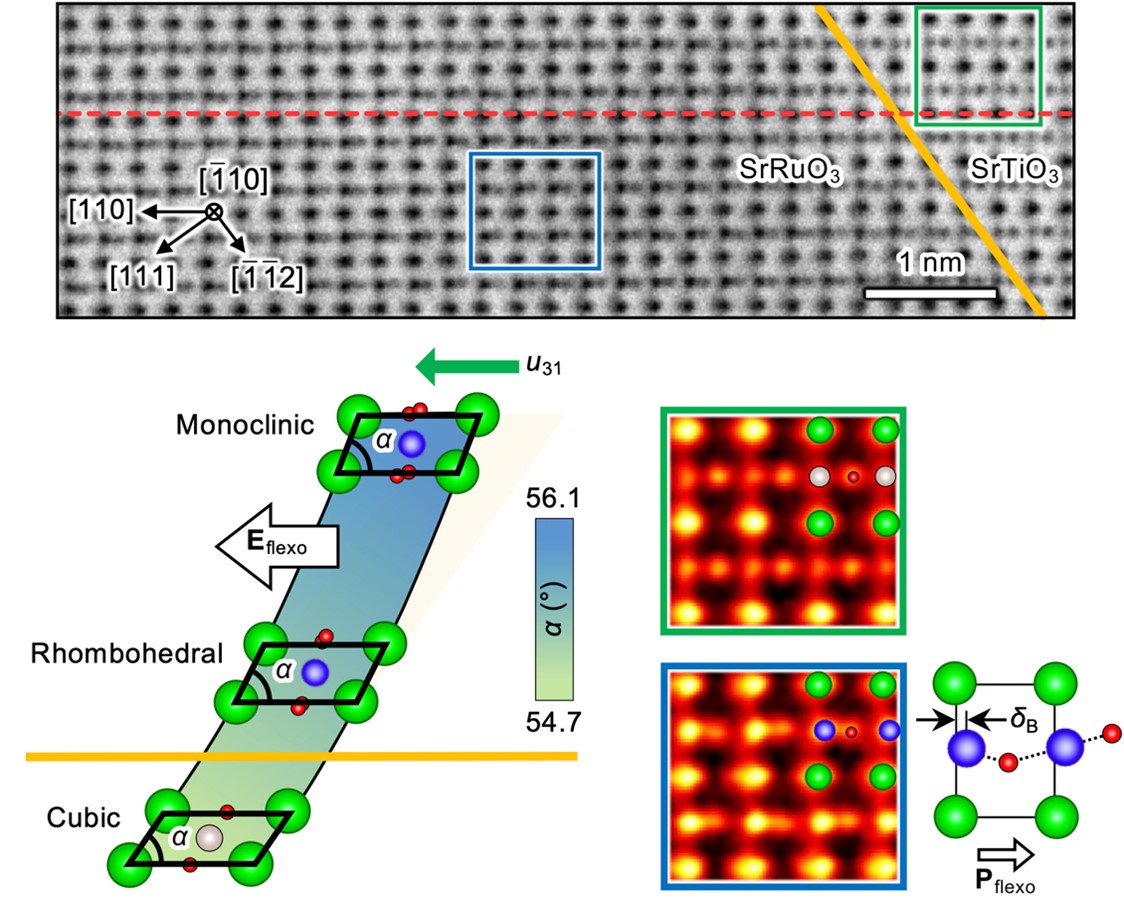Physics Department News
New paper published in Nature Physics
Dr Wei Peng, lead author with colleagues Professor Ana Sanchez, Professor David Walker and Steven Hindmarsh have worked collaboratively with other institutions to publish their paper titled Flexoelectric polarizing and control of a ferromagnetic metalLink opens in a new window in Nature Physics on Jan. 17, 2024.
The research was funded by the National Research Foundation of Korea (NRF), the Institute for Basic Science (IBS, Korea), and the Engineering and Physical Sciences Research Council (EPSRC, UK), set out to generate and control quantum phases in transition metal oxides by atomic scale epitaxy.
Following their research, the paper highlights that inhomogeneous strain in a ferromagnetic metal can induce a polar structure. This phenomenon is well known as flexoelectricity and has been proved effective in controlling the properties of insulators and semiconductors. However, its presence in metals remains unknown since abundant free charge carriers may screen the effect and also render its observation rather challenging. In this work, the group managed to grow a high-quality film of a ferromagnetic metal, SrRuO3, on a SrTiO3 substrate with built-in inhomogeneous strain, thus facilitating direct observation of the strain-coupled polar structure by high-resolution electron microscopy . The result is key to understanding the electromechanical coupling effect in metallic materials and further its application in controlling various properties such as electron correlation, magnetic properties, and transport.
 Image shows a (111)-oriented SrRuO3/SrTiO3 heterostructure, the short-range interfacial structure coupling effect and the long-range misfit strain effect cooperatively induce a shear strain gradient in the otherwise centrosymmetric SrRuO3 layer, flexoelectrically polarising it with large Ru off-centre displacements.
Image shows a (111)-oriented SrRuO3/SrTiO3 heterostructure, the short-range interfacial structure coupling effect and the long-range misfit strain effect cooperatively induce a shear strain gradient in the otherwise centrosymmetric SrRuO3 layer, flexoelectrically polarising it with large Ru off-centre displacements.
